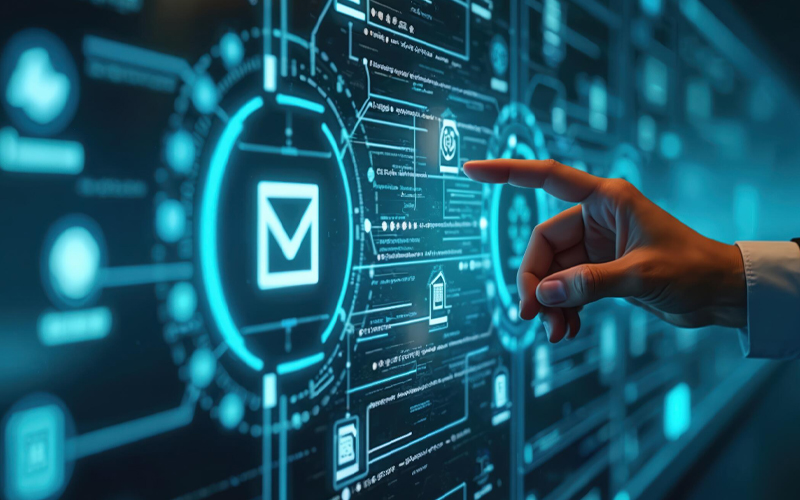Picture a courtroom trial. The atmosphere is tense, with witnesses interrogated, arguments presented, exhibits displayed, evidence produced, and a judgement announced. Have you ever wondered how attorneys prepare for a trial? How much and what kind of groundwork is put into a case? Research and analysis are important parts of a lawyer’s job. They give lawyers clarity and insight into a case.
In the lead-up to a trial, attorneys engage in a procedure called Discovery, in which lawyers gather evidence, either by interrogating, getting admissions and depositions, or collecting documents. Lawyers require people’s cooperation, and access to data and records to do this properly.
Today, the quantum of evidence produced electronically is increasing, as is also evidence that is recorded and stored. Emails, text messages, images, voicemails, audio files and social media posts determine case outcomes. This has increased the complexity of the discovery process, giving birth to eDiscovery (electronic discovery).
Unearthing evidence
eDiscovery is a process that involves the identification, collection, and production of electronic evidence, also called electronically stored information (ESI). It begins when a lawsuit, criminal or civil, is imminent, and continues until documents are presented in court. When it comes to court proceedings, the issue of electronic data mismanagement can arise. To address this concern, a framework known as the Electronic Discovery Reference Model (EDRM) has been established. The EDRM sets forth a set of guidelines and standards for the retrieval and discovery of digital data. The framework proposes nine stages to eDiscovery, which are outlined below:
Information Governance:
It lays down principles that guide information handling in each legal case and defines how ESI must be collected and preserved to ensure its integrity and authenticity.
Identification:
This stage involves identifying all information (in any form) relevant to a case.
Preservation:
It details measures to ensure ESI preservation. They include backups and copies, and checks to prevent record tampering, deletion, or destruction.
Collection:
This stage deals with evidence gathering and compilation. Documents, subpoenas, interviews, and any other pieces of information collected as evidence are reviewed to ensure admissibility in court.
Processing:
This is the stage where data retrieval is made efficient in preparation for evidence presentation. It involves the removal of duplicate records, formatting data, extracting metadata, and sorting and organising information — a time-consuming activity, but extremely critical and necessary.
Review:
At this stage of the framework, the evidence collected for the case is examined and a strategy is worked out on how it is to be used in court.
Analysis:
This phase involves rating each electronic evidence according to its significance for the case. The analysis is done by keyword or pattern search to identify the most relevant data.
Production:
This step involves making evidence physically available to participants in a legal process, in the form of depositions, exhibits, or trial testimony.
Presentation:
This final stage is all about presenting the evidence to the court and the opposing side.
Witnessing technology’s hand
eDiscovery has revolutionised the preparatory phase of litigation proceedings. It boosts the efficiency and speed of one of the most laborious phases of the legal process: managing, searching, and assessing records.
However, given the sharp rise in ESI volumes and the difficulty of the multistage procedure, the time has come to equip eDiscovery with the appropriate technology, specifically automation. Here are some benefits that automation brings to the table:
- Law firms can operate more efficiently with automated document capture and content management technologies.
- During the initial stages of case assessment, legal teams conduct preliminary data analyses, uncovering substantial information. Inputting this information into automation software can produce reports regarding the contents of ESI.
- Artificial intelligence (AI) models can classify case-related materials as relevant or irrelevant, with minimal human oversight.
- Automating the collection stage of eDiscovery, under the careful supervision of IT specialists, forensic investigators, and/or legal counsel, ensures that the appropriate ESI is collected.
- One of the most software-intensive eDiscovery processes is processing. Automation can be leveraged in this phase for deduping, removing superfluous files, identifying near-duplicates, and sorting files. This helps with easy reference during analysis.
Soliciting attention
The market for legal services was worth $788.94 billion in 2022, and in 2026, it is projected to be worth $1112.75 billion.
Given the significant rise in lawsuits, the switch to digital records has come as a relief, especially since paper files have proven to be cumbersome and hazardous. Additionally, moving to digital records has also made the legal process more efficient.
With the increasing popularity of data capture and electronic content management, the landscape of law practices is also transforming. New opportunities, including legal process outsourcing, are mushrooming and various process improvement initiatives such as eDiscovery are getting more widely used.
Although eDiscovery is still a relatively novel idea, it is growing in acceptance in the judicial system, offering smooth case management, and improved performance, accuracy, and efficiency in litigation preparation. Automation empowers this phase further and assists law firms in their struggle to keep up with the increasing workload.
eDiscovery, together with automation and an experienced legal team, makes an invincible combination. Embrace it!
* For organizations on the digital transformation journey, agility is key in responding to a rapidly changing technology and business landscape. Now more than ever, it is crucial to deliver and exceed on organizational expectations with a robust digital mindset backed by innovation. Enabling businesses to sense, learn, respond, and evolve like a living organism, will be imperative for business excellence going forward. A comprehensive, yet modular suite of services is doing exactly that. Equipping organizations with intuitive decision-making automatically at scale, actionable insights based on real-time solutions, anytime/anywhere experience, and in-depth data visibility across functions leading to hyper-productivity, Live Enterprise is building connected organizations that are innovating collaboratively for the future.








